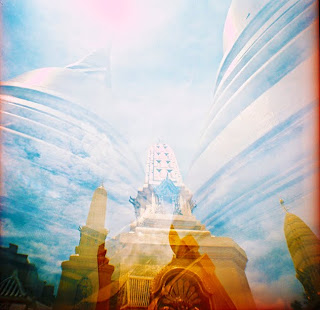
Are you in the mood to ponder about the questions on why you are into analogue photography? Sean Miles Lotman, a writer and budding haiku poet, tackles these hot topics of discussion and elaborates on the intrinsic aura that lies in the analogue world.
There is a tendency among photographers to define themselves through their camera as much as by the photographic end result. Doing so they willfully reveal a philosophical approach to seeing the world with their chosen instrument.
With digitalization streamlining the photographic experience it seems no coincidence that Lomography should be in its ascendancy. In her classic text On Photography, Susan Sontag writes that faster, better technology will cause some individuals to want to produce photos with a special, handmade quality, “an aura,” so to speak. Writing about this subject in the late 1970s, it seems prescient today when you look at the democratization of photography we’ve witnessed in the last decade, particularly user-friendly digital SLRs saturating the image market. Nikon, and especially, Canon, have produced cameras so popular it feels like everything this past decade has been photographed to a condition of numbness. How can photographs of iconic images such as the Pyramids, Angkor Wat, or the Grand Canyon surprise us anymore? The Lomo and its tendency towards the serendipitous accident is the counterpoint to the digital argument of neatness, focus, and “the sure thing.”
the popularity of the iPhone application, Hipstamatic, which transforms boring camera phone images into something with an “analogue feel.” As the first syllable of its name suggests, this analogue shortcut is very trendy among a young, cool population surfeited with digital photography.
 They say imitation is the sincerest form of flattery but there is also a risk of industrial and artistic plagiarism. Beyond these considerations, the Hipstamtaic completely misses the point. Shooting analogue is not just an aesthetic; it is just as much a philosophy and a method. Analogue is an awareness that we live in an unpredictable, uncontrollable, vibrant world rife with hidden beauties and eloquence in small, everyday objects. Shooting analogue requires the photographer to be more intuitive than his digital counterpart—to feel his environment better, because factoring in the costs of film, development, and prints, you do not have trigger-finger options.
They say imitation is the sincerest form of flattery but there is also a risk of industrial and artistic plagiarism. Beyond these considerations, the Hipstamtaic completely misses the point. Shooting analogue is not just an aesthetic; it is just as much a philosophy and a method. Analogue is an awareness that we live in an unpredictable, uncontrollable, vibrant world rife with hidden beauties and eloquence in small, everyday objects. Shooting analogue requires the photographer to be more intuitive than his digital counterpart—to feel his environment better, because factoring in the costs of film, development, and prints, you do not have trigger-finger options.But in its distortion of reality, the Lomo photograph is more akin to the paintings of Impressionists than the Surrealists, for it is not trying to subvert reality as much as build a daydream out of it. Impressionism and Lomography share a primacy of visual effects over detail and vividness over geometry.
























